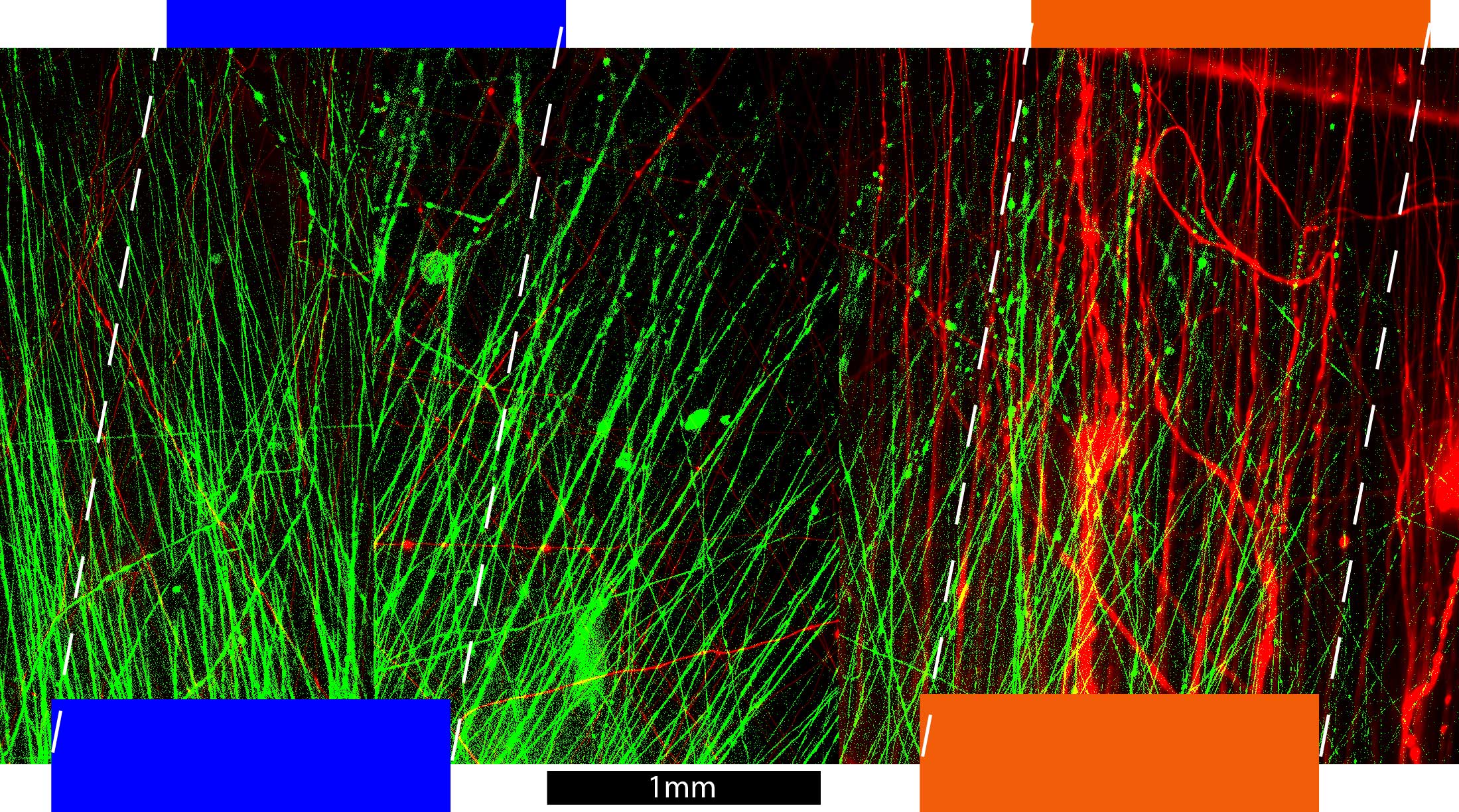
The direction of cell growth is associated with chemical, structural and/or mechanical properties of the substrate. Structurally, electrospun nanofibers provide a suitable environment for cell attachment and proliferation due to their similar physical dimension to that of the extracellular matrix. Furthermore, by modulating the topographical features of nanofibers, which include fiber diameter and orientation, cell growth and its related functions can be modified. Here, we demonstrate a solid gradient scaffold for directional growth of spiral ganglion neurons (SGNs). Spatial nanofiber alignment is controlled using a custom directional electrospinning setup. The electric field to spatially control the confinement of nanofibers was simulated with COMSOL Multiphysics simulation tool and experimentally verified. To promote neurite outgrowth and impart directionality to SGN cells, a spatial gradient of neurotrophin (NT) is introduced. By sequentially electrospinning solutions of increasing concentrations of NT in the biodegradable polymer and collecting sections of these aligned fibers along a uniaxial direction, we achieved uniform sectional nanofibers of increasing gradient concentrations. Initial tests with SGNs show improved cell adhesion and decreased morbidity to microfabricated PLGA scaffolds. Our solid gradient nanofiber membrane is versatile, obviates the need for the complex microfluidic mixer system to generate an NT gradient, is potentially implantable, and can be used in other nerve regeneration studies in peripheral nerve system and central nerve system.

